Duration
Birdwatching through Costa Rica's Diverse Ecosystems
From $2,390 pp
Bookable From
Year-round
Trip Style
Self-Guided
Country
Costa Rica
Physical Rating
Mildly Strenuous
Overview
This enriching birdwatching tour through Costa Rica is for curious and passionate birders eager to see avian species in their natural and diverse ecosystems.
On a well-paced 14-day journey through Costa Rica's wetlands, cloud forests, and national parks, you'll see firsthand the country’s incredible bird diversity and natural beauty. Experience world-renowned birdwatching destinations, observe a stunning variety of species in their natural habitats, and connect with expert guides who will help you spot, identify, and learn about Costa Rica’s avian wonders.
If you're looking for an exceptional and immersive birdwatching experience, this itinerary promises to be an unforgettable exploration of Costa Rica's thriving biodiversity.
---
Begin your adventure in Naranjo with an expert-led birdwatching tour, where you’ll spot a variety of endemic and migratory species in the region’s lush coffee-growing landscapes.
Continue to Caño Negro, a wetland paradise teeming with birdlife. Enjoy a guided tour and boat excursion with excellent chances to see waterfowl and migratory birds, such as kingfishers, spoonbills, and the elusive Agami heron.
In Sarapiquí, hike through thriving tropical rainforest in search of toucans, trogons, and tanagers, while experiencing one of Costa Rica’s most biodiverse regions.
Head to Turrialba, a hidden gem for birders where lowland and highland ecosystems meet. A morning birdwatching tour offers the chance to hear and see both endemic and migratory species.
San Gerardo de Dota, nestled in the Talamanca Mountains, is prime territory for spotting the Resplendent Quetzal. Trek through misty cloud forest to find this iconic bird and other highland species like hummingbirds and flycatchers.
In Piedras Blancas, venture deep into pristine rainforest on a guided hike to observe mixed flocks and tropical birds in a remote, untouched ecosystem. This region is an off-the-beaten-path haven for bird enthusiasts!
Conclude your journey in Carara National Park, a biodiverse transition zone where dry and wet forests meet, offering the chance to see scarlet macaws, trogons, and other forest species.
Highlights
- Rise early to spot endemic and migratory birds amid Naranjo’s peaceful coffee country
- Explore the renowned wetland sanctuary and biodiversity of Caño Negro from land in search of rare species like the Agami heron
- Glide through Caño Negro’s winding waterways and observe a variety of waterfowl, wading birds, and other wildlife
- Hike through Sarapiquí’s lush rainforest, a hotspot for colorful toucans, trogons, and tanagers
- Wake up to the sounds of nature in tranquil Turrialba, and birdwatch in this serene region blending lowland and highland ecosystems
- Seek out the iconic Resplendent Quetzal on a specialized cloud forest tour in San Gerardo de Dota
- Discover the untouched wilderness of Piedras Blancas and look for hidden avian treasures in this remote rainforest ecosystem
- See where dry and wet forest ecosystems converge in Carara National Park


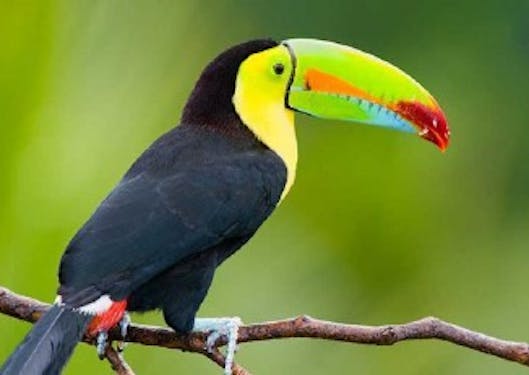

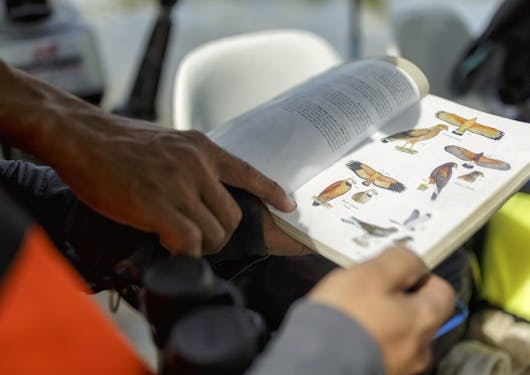
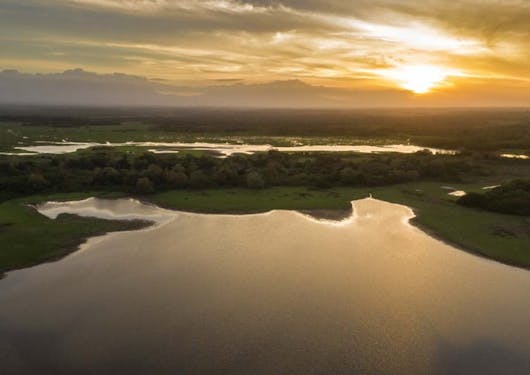

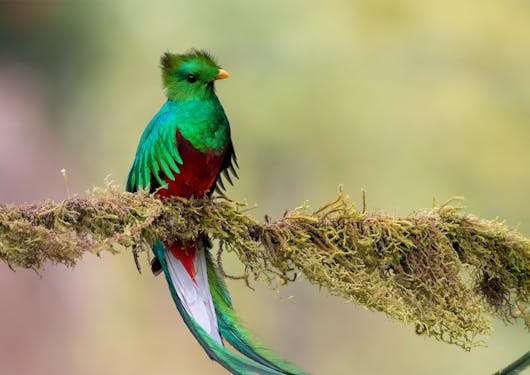
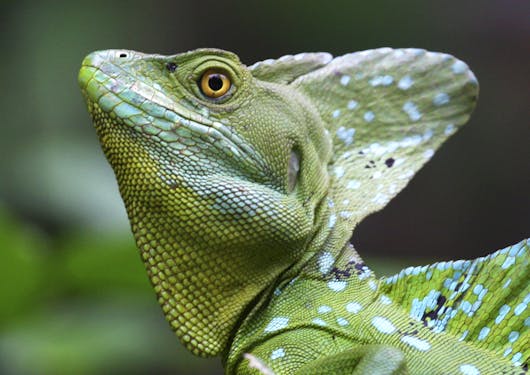
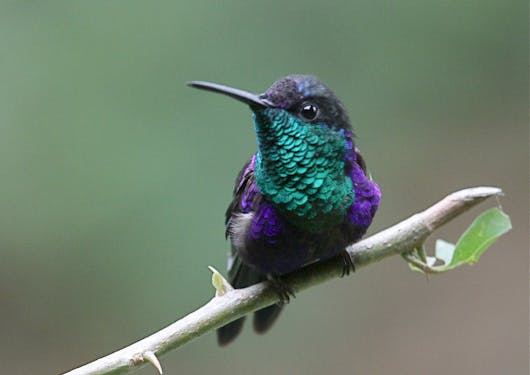
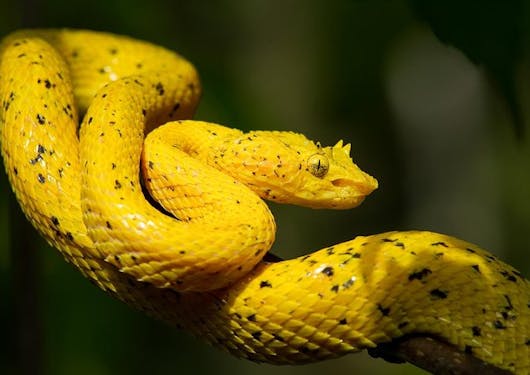
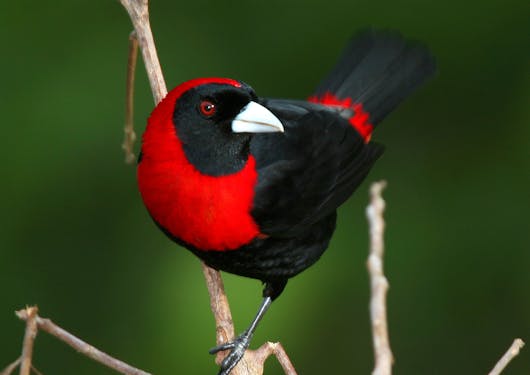
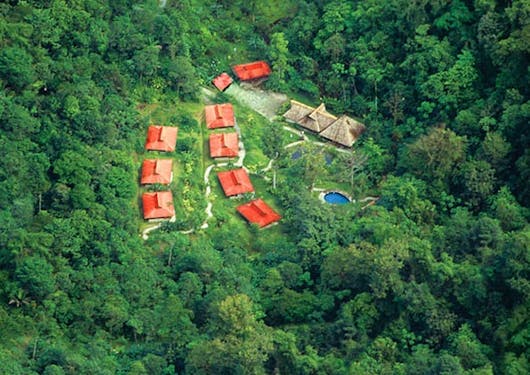
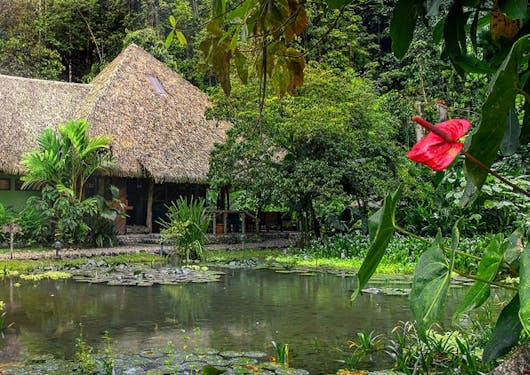
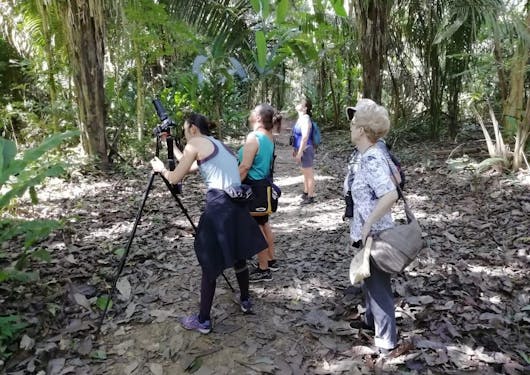
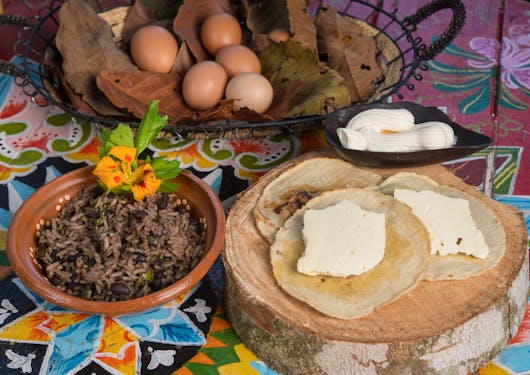
Over two weeks, you'll spend:
- 1 night in Naranjo in a Boutique Hotel upon arrival
- 2 nights in Caño Negro at a 3* lodge
- 2 nights in Sarapiquí in a 3* lodge
- 1 night in Turrialba at a Boutique Hotel
- 2 nights in San Gerardo de Dota in a 4* hotel
- 3 nights in Piedras Blancas in a 3* lodge
- 2 nights in Carara in a 3* lodge
All included tours are guided half-day experiences and are generally scheduled one per day (except on Day 3 when you have two half-day tours, one in the early morning and one in the afternoon). This allows for a balanced pace, giving you time to rest, explore on your own, or enjoy the surroundings at leisure.
With a rental car, you’ll drive between key birding destinations at your own pace, allowing flexibility to enjoy relaxed drives, explore additional hotspots and spontaneous spots, and soak in scenic views during your free time. On days dedicated to travel between destinations, you typically have no activities planned (except on Days 2 and 7 when you'll join early morning tours before transferring to the next destination).
You’ll enjoy mostly two-to-three night stays in carefully selected lodges in Naranjo, Caño Negro, Sarapiquí, Turrialba, San Gerardo de Dota, Piedras Blancas, and Carara—each chosen for its proximity to prime birdwatching areas and commitment to sustainability. Every stop offers a new opportunity to observe and photograph an incredible variety of birdlife!
This journey is crafted to provide not only exceptional birdwatching experiences but also a deep connection to Costa Rica’s landscapes, conservation efforts, and eco-friendly travel practices.
Seasonal Notes
Costa Rica is a year-round destination, with each season offering unique experiences depending on what you seek—whether it's sun-soaked beaches or lush rainforests in their full vibrant glory.
Dry Season (December to April):
This is considered the high season for tourism in Costa Rica, especially on the Pacific coast. Expect sunny, warm weather, perfect for beach activities and outdoor adventures. It’s the ideal time to explore national parks, visit volcanic regions, and enjoy the wildlife in its dry-season habitats. The Central Valley and most coastal areas experience pleasant temperatures, though some areas like the Caribbean may still see occasional rainfall.
Green Season (May to November):
During the rainy season, Costa Rica turns lush and green, which is why it’s often called the Green Season. Although rains are more frequent in the afternoon and evening, mornings are typically clear and perfect for outdoor activities. The green season is an excellent time for those looking to experience Costa Rica’s rich biodiversity, as this period marks the peak of plant growth and animal activity. The Caribbean coast tends to receive rain throughout the year but remains fairly pleasant. Additionally, fewer tourists mean more relaxed travel conditions.
Itinerary
Day 1 San Jose [Costa Rica] (arrival day)
Day 2 Naranjo: Morning Birdwatching; Caño Negro Wetlands
Day 3 Caño Negro Wetlands: Birdwatching Tour & Wetlands Tour
Day 4 Caño Negro Wetlands - Sarapiquí Rainforest
Day 5 Sarapiquí Rainforest: Rainforest Hike Tour
Day 6 Sarapiquí Rainforest - Turrialba Valley
Day 7 Turrialba Valley: Birdwatching Tour; San Gerardo de Dota
Day 8 San Gerardo de Dota: Quetzal Tour
Day 9 San Gerardo de Dota - Piedras Blancas
Day 10 Piedras Blancas: Hike Tour
Day 11 Piedras Blancas: Free Day
Day 12 Piedras Blancas - Carara
Day 13 Carara: Carara National Park
Day 14 Carara - Juan Santamaria International Airport
Route Map

Inclusions & Exclusions
Meet & Greet at SJO International Airport
13 nights lodging (1 night in a boutique hotel in Naranjo; 2 nights in a 3* lodge in Caño Negro; 2 nights in a 3* lodge in Sarapiqui, 1 night in a boutique totel in Turrialba, 2 nights in a 4* hotel in San Gerardo de Dota, 3 nights in a 3* lodge in Piedras Blancas, and the last 2 nights in a 3* lodge in Carara)
D2: Morning Birdwatching Tour (Shared Half-Day Experience)
D3: Birdwatching Tour (AM Shared Half-Day Experience)
D3: Wetland Tour (PM Shared Half-Day Experience)
D5: Rainforest Hike Tour (Shared Half-Day Experience)
D7: Morning Birdwatching Tour (Shared Half-Day Experience)
D8: Quetzal Tour (Shared Half-Day Experience)
D10: Hike Tour (Shared Half-Day Experience)
D13: Carara National Park Tour (Shared Half-Day Experience)
Meals mentioned in the itinerary
International flights
Meals not mentioned
Alcohol
Rental car & insurance (see Pricing info)
Rental car insurance (see Pricing info)
Ground transfers not mentioned
Personal expenses
Insurance
Visa
Taxes
Tips
Pricing
Prices exclude flights to/from the destination.
Prices are for double room occupancy unless indicated otherwise.
This trip requires a rental car and rental car insurance. Pricing for the car and insurance are upon request and will be added to the listed trip price. You're also welcome to book your rental car on your own.
Prices vary by season:
- High Season: Nov. 1, 2025 - April 30, 2026
- Mid Season: May 1 - Nov. 30, 2026
Deposit per person
30% of the trip price
Solo Traveler
High: $4,960 Mid: $4,500
Shared Room - sleeps 2 - price per person
High: $2,975 Mid: $2,690
Shared Room - sleeps 3 - price per person
This room type will have two beds. High: $2,650 Mid: $2,390
Single Supplement
If you're traveling with a group and prefer your own private room. High: $1,190 Mid: $1,050
Payment & Cancellation Policy
This trip is available year-round.
At checkout, choose your preferred departure date and pay the deposit. Yugen Earthside’s standard Payment & Cancellation Policy applies.
Book With Confidence
- Your deposit is fully refundable for 30 days when you book 120+ days in advance and pay by bank transfer.
- If you pay by credit card, the card processing fees are non-refundable.
- We’ll confirm availability for your chosen dates within 3 business days. If confirmed, you’re all set! If not, we’ll help you adjust your dates or refund your deposit.
Sustainability
Since 1972, we have been committed to positioning Costa Rica as a sustainable tourism destination. Through partnerships with government institutions and organizations, we've implemented initiatives that protect the environment, support local communities, and promote responsible travel practices.
Our approach includes collaborating with eco-certified accommodations, supporting conservation projects, and integrating carbon offset programs to reduce our environmental impact. We also work closely with local communities, reinvesting in their economies and fostering cultural preservation. Some of our company-wide initiatives include:
- Actively collaborating with local projects that protect national parks, reserves, and biological corridors throughout Costa Rica.
- Organizing a volunteer trash collection program.
- Supporting food banks in San José and Guanacaste.
- Educating employees, travelers, and business partners on sustainability and conservation to encourage responsible practices.
- Adhering to Fair Trade practices for all collaborators and partners, from tour guides to small-scale farmers, to foster ethical economic development.
- Promoting tourism dispersal and economic support in rural areas by focusing on less-visited regions, reducing the strain on popular destinations, and promoting inclusivity.
As we move forward, we remain dedicated to creating meaningful travel experiences while ensuring the preservation of Costa Rica's natural and cultural heritage for future generations.
We are proud to hold certifications such as the Certification for Sustainable Tourism (CST), awarded by the Costa Rican Tourism Board, which reflects our dedication to environmental conservation and responsible tourism.
---
Environmental Initiatives
- Each selected lodge in this itinerary is committed to responsible tourism, incorporating eco-friendly practices such as waste reduction, water conservation, and renewable energy use. Many are designed with sustainable architecture that blends harmoniously with the surrounding ecosystems, ensuring minimal impact on local wildlife and habitats.
- The activities included are carefully chosen to align with Costa Rica’s conservation efforts. Whether it’s exploring the wetlands of Caño Negro on a low-impact boat tour, hiking through the cloud forests of San Gerardo de Dota in search of the Resplendent Quetzal, or birdwatching in the pristine rainforest of Piedras Blancas, every experience is designed to foster appreciation for nature while minimizing environmental disturbance.
- This journey actively supports biodiversity conservation by engaging travelers with initiatives that protect Costa Rica’s natural heritage. From guided birdwatching tours that promote sustainable ecotourism to visiting national parks and private reserves dedicated to habitat preservation, this itinerary allows guests to immerse themselves in nature while contributing to its long-term protection.
Community Support
- Guests will have the opportunity to engage with local communities through meaningful experiences, such as guided birdwatching tours led by expert local naturalists who share their deep knowledge of Costa Rica’s avian diversity. In San Gerardo de Dota, travelers will learn from local guides about the importance of cloud forest conservation and the role of community efforts in protecting the Resplendent Quetzal and other endemic species.
- This journey supports community-driven conservation and sustainable tourism initiatives. By staying at eco-lodges that collaborate with local conservation projects and participating in guided excursions that directly benefit local communities, travelers contribute to the protection of biodiversity while supporting livelihoods in rural areas. These initiatives ensure that the economic benefits of tourism reach those who are actively preserving the environment.
- Travelers will also have opportunities for cultural exchange by visiting local communities and small-scale conservation programs. You'll learn about sustainable land management in Carara, engag with passionate naturalists in Caño Negro, immerse yourself in Costa Rica’s environmental and cultural heritage while creating positive, lasting connections with the people who protect it.
Economic Initiatives
- This itinerary prioritizes responsible travel by partnering with locally owned eco-lodges, tour operators, and restaurants, ensuring that tourism revenue directly supports the communities visited. By staying in sustainable accommodations and participating in locally guided birdwatching tours, travelers help create economic opportunities for residents while experiencing Costa Rica’s incredible biodiversity through the eyes of expert local naturalists.
- Sustainable tourism plays a crucial role in job creation and economic empowerment for rural communities. From skilled birding guides in Caño Negro and San Gerardo de Dota to family-run lodges in Piedras Blancas and Sarapiquí, this journey supports individuals and businesses dedicated to conservation and eco-tourism. These initiatives provide stable incomes while fostering environmental stewardship and cultural preservation.
- By choosing this experience, travelers contribute to a tourism model that reinvests in conservation and community-led projects. A portion of the revenue goes toward habitat restoration, wildlife protection, and education programs that benefit both residents and the environment. This approach ensures that ecotourism remains a sustainable and impactful force for generations to come.
Health & Safety
Be sure you have traveler's insurance.
We are dedicated to ensuring that tourists visit a healthy and safe country. Costa Rica, with its exemplary national health system and status as one of the safest countries in the region, provides a secure environment for our visitors. Our Sustainability Handbook seeks to ensure the safety of the services customers receive. These guidelines include the selection of responsible suppliers and support for strategies that promote a safe destination, different policies that cover visitors, and participation in initiatives such as the Tourism Safety Committee of the National Chamber of Tourism.
We also provide advice for travelers upon arrival in the form of a Welcome Letter that includes Responsible Tips to Become a Sustainable Traveler.




